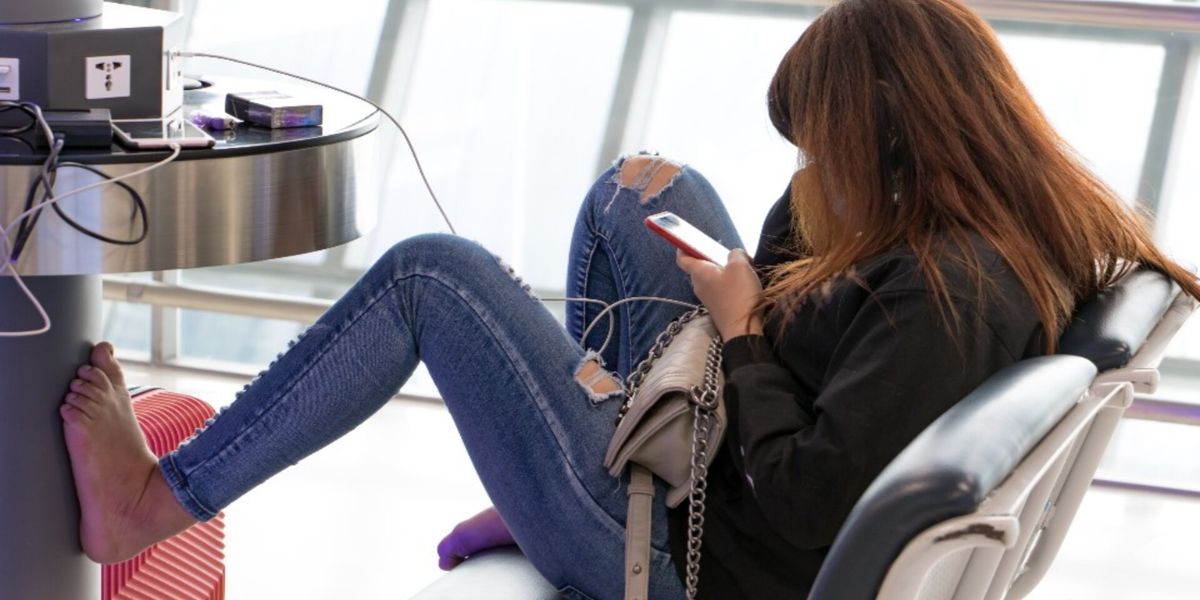The TSA has just kicked off the summer travel season, and with it, thousands of travelers are about to take to the skies, just like every year.
Very few suspect that something as routine as charging your phone using the airport’s USB port could turn into the perfect opportunity for your personal data to be stolen.
Yes, we’re not trying to cause panic, but we do want you to stay alert, just like the TSA, which has issued an urgent warning that should make us all think.
Cybersecurity experts have warned that public chargers and free WiFi networks may seem harmless (even a kind gesture for travellers), but the reality is that hackers see them as an open door to your personal data.
It’s called “juice jacking”, and it steals your identity without you even realizing it, and it’s become more common than we think!
Key information
| What’s happening | The TSA has issued a warning about cyber risks at airports, especially related to USB ports and WiFi. |
| Main threat | Juice jacking: hackers steal data when you plug into public USB charging ports. |
| How it works | A hidden chip or malware in the port accesses your phone and transfers data without your knowledge. |
| Data at risk | Messages, contacts, browser history, passwords, and even banking information. |
What is juice jacking and how does it work
The term may sound like a video game, but it’s a real threat. And a serious one. Juice jacking happens when you connect your mobile device to a USB port in public places like airports, stations, or even malls. Hackers take advantage of the connection to initiate data transfers. But this happens without your knowledge.
A charger that does more than charge
So yes, while you think you’re peacefully charging your phone as you wait at the boarding gate, hackers could have installed a tiny chip that extracts personal data without the user realizing it. A single connection is enough for the transfer to begin. Scary, right?
What kind of information can be stolen
In more dangerous cases, the attacker can access messages, contacts, browsing history, and even capture passwords and bank logins… Now imagine being out of communication for several hours at thirty thousand feet… Maybe it’s better not to plug your phone into one of those ports.
The airport’s free WiFi
Free WiFi hotspots, especially those mimicking airport or airline names, are also a target. Many users connect without thinking and don’t realize they’re connecting to fake networks. These are called honeypots and are basically used to break into your mobile device.
Once connected, they intercept everything you type: from your credit cards to your logins.
What does the TSA recommend to protect yourself?
The TSA has warned travellers to bring their own chargers with adapters or power banks. Public USB ports should be avoided. If you urgently need to charge your phone, it’s better to bring your own charger and plug it directly into a power outlet.
As for WiFi, the recommendation is clear: if you don’t have a reliable VPN and you’re unsure about the access point, it’s better not to connect. And above all, never enter passwords or banking info while using an open network!!
Can these thefts be avoided?
They can only be avoided if we also avoid using these networks. We tend to think public networks and spaces are safe, but they’re not. Don’t worry, it’s not our fault, it’s just that there are bad people in the world… And criminals take advantage of that innocence.
What do we recommend?
The main thing is to connect a VPN to your mobile phone. Search on Google to find one that suits your needs and install it. And most importantly, never use public networks unless you absolutely have no other choice. Try to get everything ready before your flight to avoid the temptation to connect to a public network. Don’t risk it!




